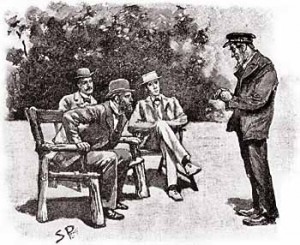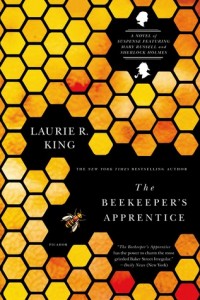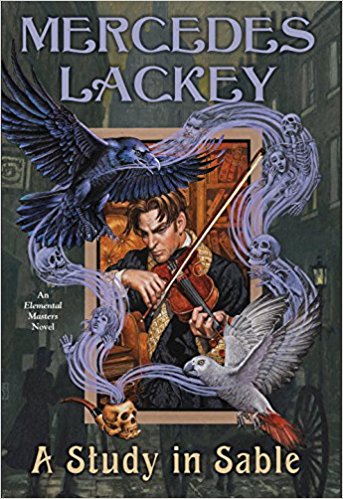 A Study in Sable (Elemental Masters #11) by Mercedes Lackey
A Study in Sable (Elemental Masters #11) by Mercedes Lackey Formats available: hardcover, paperback, ebook, audiobook
Series: Elemental Masters #11
Pages: 313
Published by DAW on June 7th 2016
Purchasing Info: Author's Website, Publisher's Website, Amazon, Barnes & Noble, Kobo, Bookshop.org
Goodreads
Psychic Nan Killian and Medium Sarah Lyon-White—along with their clever birds, the raven Neville and the parrot Grey—have been agents of Lord Alderscroft, the Elemental Fire Master known as the Wizard of London, since leaving school. Now, Lord Alderscroft assigns them another commission: to work with the famous man living at 221 Baker Street—but not the one in flat B. They are to assist the man living in flat C. Dr. John Watson and his wife Mary, themselves Elemental Masters of Water and Air, take the occult cases John’s more famous friend disdains, and they will need every skill the girls and their birds can muster!
Nan and Sarah’s first task: to confront and eliminate the mysterious and deadly entity that nearly killed them as children: the infamous Haunt of Number 10 Berkeley Square. But the next task divides the girls for the first time since they were children. A German opera star begs Sarah for help, seeking a Medium’s aid against not just a single spirit, but a multitude. As Sarah becomes more deeply entwined with the Prima Donna, Nan continues to assist John and Mary Watson alone, only to discover that Sarah’s case is far more sinister than it seems. It threatens to destroy not only a lifelong friendship, but much, much more.
My Review:
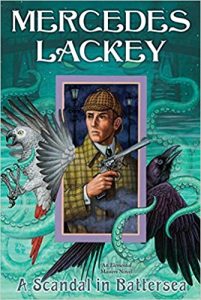 I read A Study in Sable AFTER I finished A Scandal in Battersea. That’s definitely the wrong order. But A Scandal in Battersea served as a marvelous reintroduction for this reader to the Elemental Masters series. So marvelous, in fact, that when I closed that book I grabbed as much of the series as I could from various libraries and immediately started on A Study in Sable, order be damned.
I read A Study in Sable AFTER I finished A Scandal in Battersea. That’s definitely the wrong order. But A Scandal in Battersea served as a marvelous reintroduction for this reader to the Elemental Masters series. So marvelous, in fact, that when I closed that book I grabbed as much of the series as I could from various libraries and immediately started on A Study in Sable, order be damned.
I’m very glad I did.
With the exception of the villains, the cast of characters is the same between the two books. Our heroines are the psychic Nan Killian, Sarah Lyon-White the medium, their extremely intelligent and protective birds, and the famous Dr. John Watson and his wife Mary, elemental masters of water and air, respectively.
And as deeply involved as ever in the life and casework of that most rational of men, Sherlock Holmes.
Just as in A Scandal in Battersea, the focus here is on the magic that functions in this slightly alternative version of our own world. But as in Scandal, a case that at first seems to rest entirely in the magical realm that Holmes refuses to believe exists, turns out to have so many potential effects on his rational universe that he finds himself involved in spite of himself.
Such is the case of A Study in Sable. A celebrated German opera singer – definitely not Irene Adler – is under siege by hordes of ghosts while she performs in London. She hires Sarah for her mediumistic talents, but unlike most of the people who hire either Sarah or Nan, makes it clear that ONLY Sarah’s presence is welcome, and that Nan is something less than the mud she scrapes off her expensive boots.
At first, Sarah is happy for the money, and feels duty bound to help the spirits “cross over”, but looks forward to the end of her task. But as the horde of ghosts seems to be nowhere near diminishing, Nan and Sarah’s bird Grey discern that Sarah seems to be falling under the sway of the opera singer, in a way that is not natural.
As Sarah’s natural enjoyment of the luxurious setting morphs into a kind of desperate, personality-altering hero-worship, Nan moved from being mildly jealous to seriously alarmed – and that is the point where the Watsons, and eventually Holmes, are drawn in.
The question is whether even their combined powers will be enough to draw Sarah out from under the spell before it is too late.
Escape Rating A-: I had every bit as much fun with this one as with A Scandal in Battersea. However, if you are coming to these fresh, start with Sable. The two stories flow together extremely well when read in the correct order.
Although there are no steampunk elements in these books, the way that this alternate Victorian and early 20th century England seems to function, along with its blend of magic and “normal” life, reminds me even more strongly of Cindy Spencer Pape’s excellent – but seemingly complete – Gaslight Chronicles.
But the story in A Study in Sable rests very much on the strength of its characters – particularly in this case the character of Nan Killian. She and Sarah are independent young women, who are partners in their independence but not romantic partners. At the same time, romance seems to be far from either of their current horizons. And I like that – that these young women are making identities for themselves and neither expecting nor even thinking that romance will solve things for them.
This book is particularly Nan’s show, as Sarah is increasingly not herself as the story progresses. We feel for Nan as she watches in horror as the friendship that has sustained both her and Sarah unravels under the influence of the supernaturally charismatic opera singer.
It is also fun to see a version of Dr. John Watson where he is definitely Holmes’ equal. Their spheres of talent and influence are different, but Watson in this series is a master in his own right, and never kowtows to the sometimes imperious and always self-absorbed Holmes.
The case in Sable is one where Holmes’ seemingly mundane missing persons’ case draws inevitably towards Watson’s case of malign psychic influence and Sarah’s never-ending ghostly horde. When the separate strands merge, the whole story makes wonderfully blinding sense.
I’m very glad I decided to delve into the world of the Elemental Masters. I’ll be back!

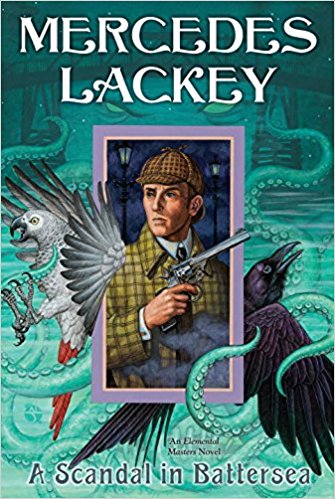 A Scandal in Battersea (Elemental Masters, #12) by
A Scandal in Battersea (Elemental Masters, #12) by 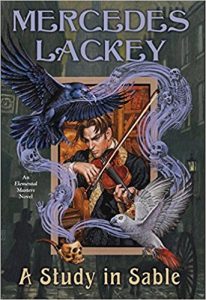 And if the monster in A Scandal in Battersea gives you the shivers as much as it did me, take a look at A Study in Emerald by Neil Gaiman (included in his collection
And if the monster in A Scandal in Battersea gives you the shivers as much as it did me, take a look at A Study in Emerald by Neil Gaiman (included in his collection 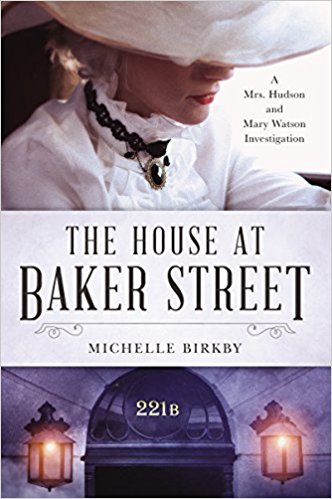 The House at Baker Street (A Mrs Hudson and Mary Watson Investigation #1) by
The House at Baker Street (A Mrs Hudson and Mary Watson Investigation #1) by 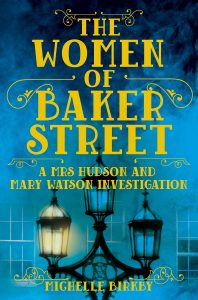 That Hudson and Watson discover in the end that evil, is in fact hunting them makes for the perfect ending – and effectively slots the first case of Hudson and Watson into the greater arc of Holmes and Watson’s long-running battle with the greatest criminal mastermind of their generation.
That Hudson and Watson discover in the end that evil, is in fact hunting them makes for the perfect ending – and effectively slots the first case of Hudson and Watson into the greater arc of Holmes and Watson’s long-running battle with the greatest criminal mastermind of their generation.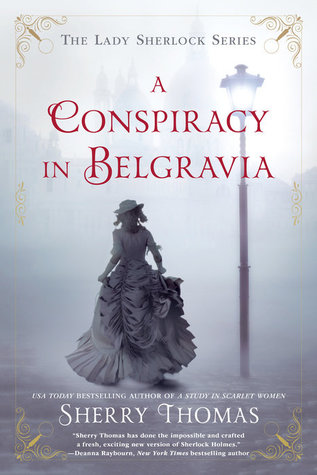 A Conspiracy in Belgravia (Lady Sherlock, #2) by
A Conspiracy in Belgravia (Lady Sherlock, #2) by 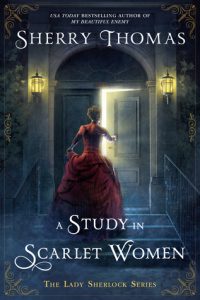 I actually read this book a couple of weeks ago, when the Sherlock Holmes book I was planning to read kind of fell through, but I still had a taste for Holmes. So I dove through the towering TBR pile and emerged with A Conspiracy in Belgravia, the second
I actually read this book a couple of weeks ago, when the Sherlock Holmes book I was planning to read kind of fell through, but I still had a taste for Holmes. So I dove through the towering TBR pile and emerged with A Conspiracy in Belgravia, the second 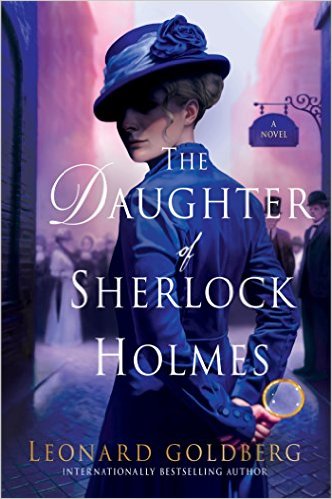 The Daughter of Sherlock Holmes by
The Daughter of Sherlock Holmes by 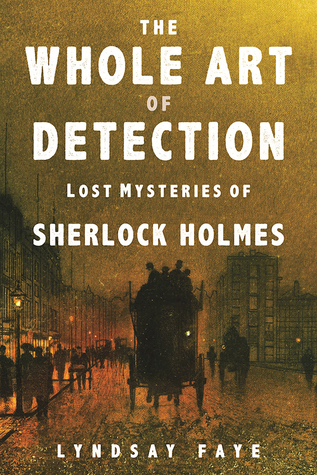 The Whole Art of Detection: Lost Mysteries of Sherlock Holmes by
The Whole Art of Detection: Lost Mysteries of Sherlock Holmes by 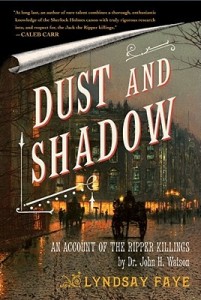 One of the best of the latter type that I have read was Lyndsay Faye’s
One of the best of the latter type that I have read was Lyndsay Faye’s 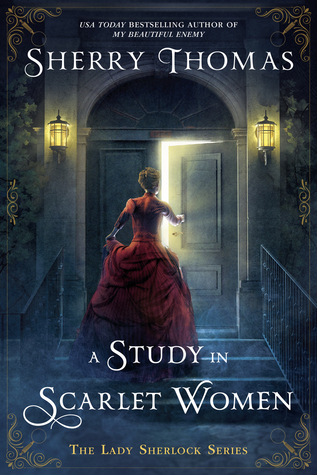 A Study in Scarlet Women (Lady Sherlock, #1) by
A Study in Scarlet Women (Lady Sherlock, #1) by 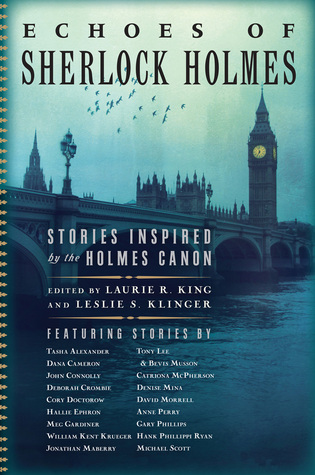 Echoes of Sherlock Holmes: Stories Inspired by the Holmes Canon by
Echoes of Sherlock Holmes: Stories Inspired by the Holmes Canon by 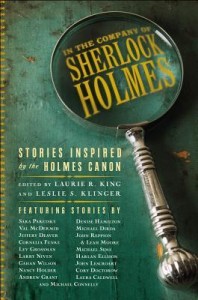 This collection is the third editorial collaboration of Laurie R. King and Leslie S. Klinger of newly commissioned tales that fall somewhere in the Sherlock Holmes tradition, if not the Holmes canon. Like the previous collections,
This collection is the third editorial collaboration of Laurie R. King and Leslie S. Klinger of newly commissioned tales that fall somewhere in the Sherlock Holmes tradition, if not the Holmes canon. Like the previous collections, 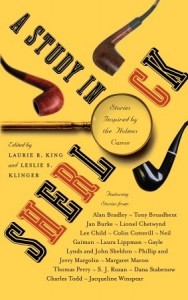 Escape Rating B+: This collection was every bit as good as the first one, A Study in Sherlock. Most of the stories here were at least enjoyable, if not memorable. And there were only a couple that either didn’t feel remotely Holmesian or just didn’t work for me. I hope there will be another editorial collaboration in this series, because each book introduced me either to new perspectives on Holmes, or new authors of mystery.
Escape Rating B+: This collection was every bit as good as the first one, A Study in Sherlock. Most of the stories here were at least enjoyable, if not memorable. And there were only a couple that either didn’t feel remotely Holmesian or just didn’t work for me. I hope there will be another editorial collaboration in this series, because each book introduced me either to new perspectives on Holmes, or new authors of mystery.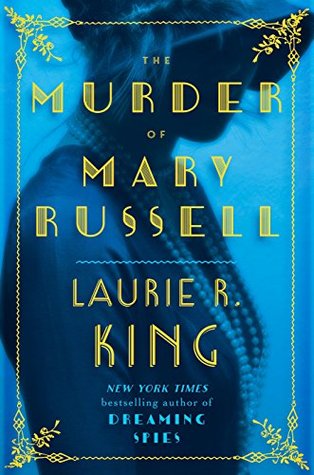 The Murder of Mary Russell (Mary Russell, #14) by
The Murder of Mary Russell (Mary Russell, #14) by 